|
Check out these great references as well: |
| Our Wireless custom profile for Wireshark |
| Our Udemy course on Wireless Packet capture |
| Our other Wi-Fi related articles |
There are several other articles that we have written on various Windows 10 WLAN/Wi-Fi commands that you can execute to perform various important wireless information gathering and management. We will refer to them below. Nevertheless, we wanted to provide a single article with all the pertinent commands and examples in one place.
We have not provided a detail of what every single output line is in every command response. You can dig deeper into these commands and outputs at the the following sites:
That said, let’s get started.
First, you will want to open a Command Line (Windows Start> Run> “cmd” – select run as Administrator, usually with a right click) or Powershell (Winodws key+X, the ‘A’) window.
Both examples shown below (we will continue in the CMD window). Note that if properly run as Administrator, you will be at the C:\WINDOWS\system32> prompt!


Displaying the WLAN/Wi-Fi Interfaces
This is easy:
netsh wlan show interfaces
Example output (I have two interfaces – Wi-Fi is my internal, and Wi-Fi4 is my external)
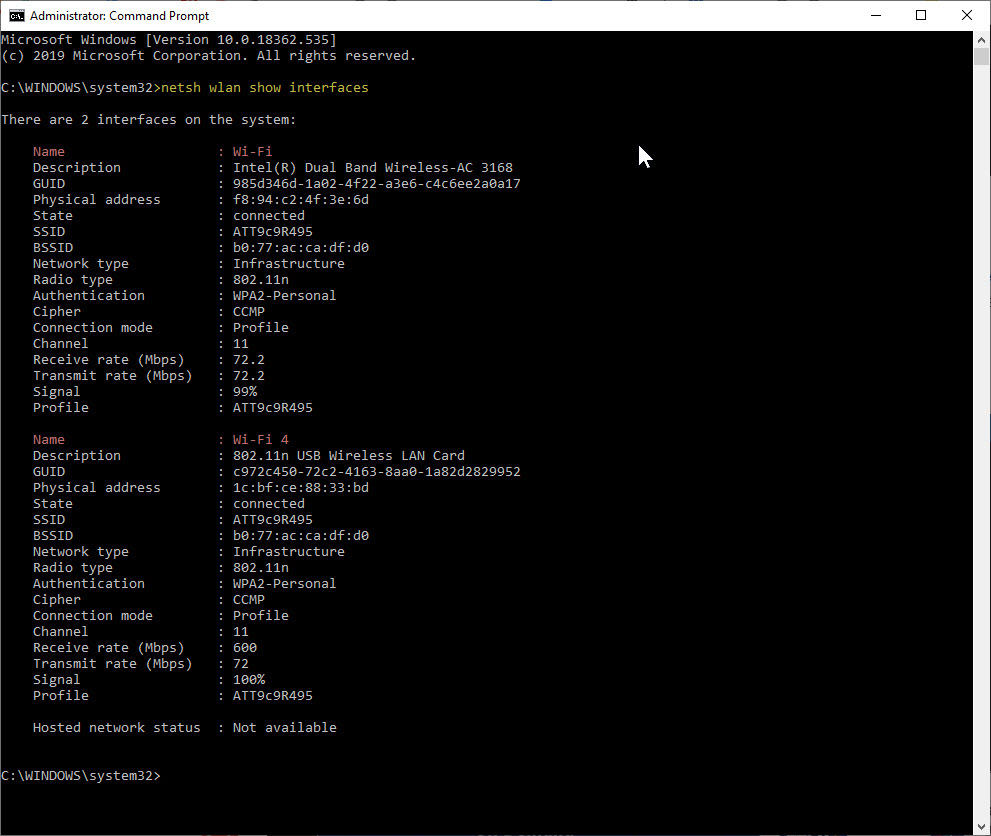
Both my interfaces were connected to a wireless LAN. If not connected, your output will be different.
For more info on the meaning of signal level – look here: https://www.cellstream.com/reference-reading/tipsandtricks/435-signal-percent-windows
WLAN/Wi-Fi Drivers
Now that we know the interfaces, what drivers are in play? You find this out with the following command:
netsh wlan show drivers
Example output:
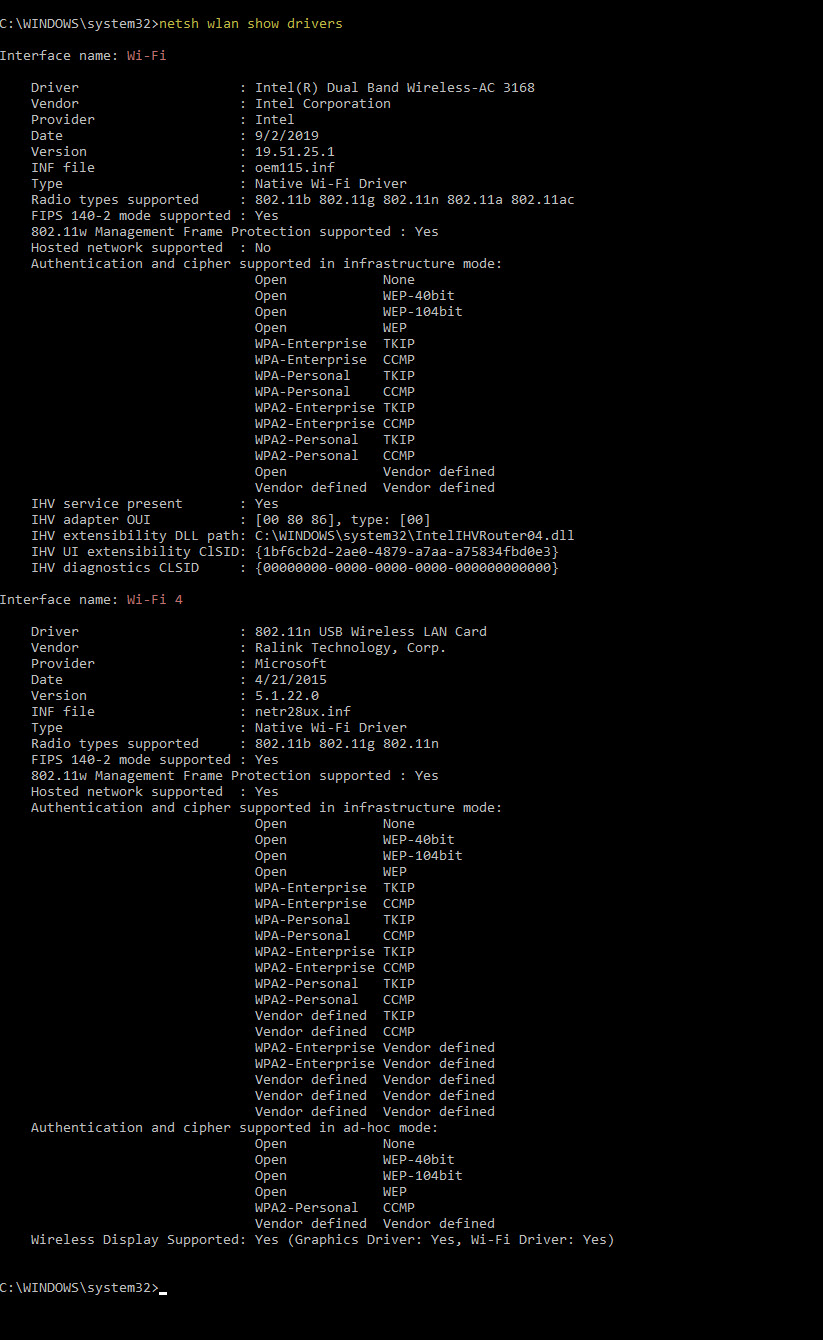
We can see that the drivers begin to show the WLAN/Wi-Fi capabilities of our interfaces.
Displaying the Nearby WLAN/Wi-Fi Networks
Almost missed this one. Youy can use netsh tpo display all the available networks around you.
Here is the command:
netsh wlan show networks mode=bssid
Here is an example output (I did this one in Powershell and I truncated it for space):
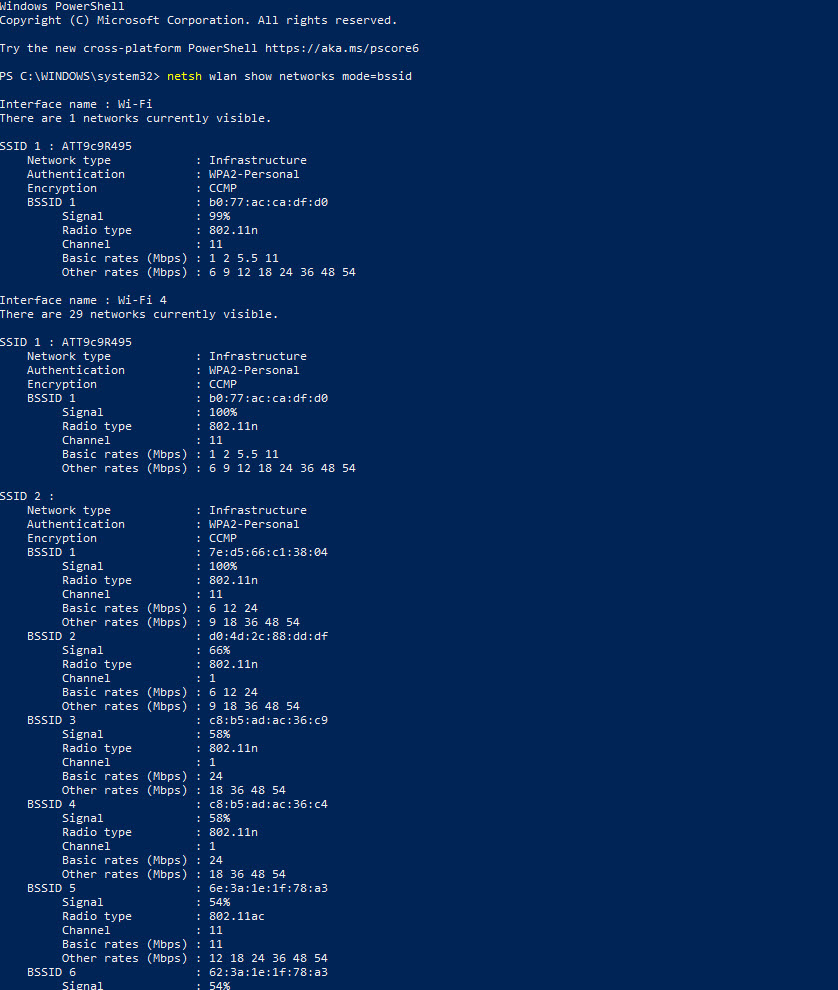
WLAN/Wi-Fi Capabilities
We can however look further into the WLAN/Wi-Fi capabilities with the following command:
netsh wlan show capabilities
Example output:

Windows WLAN/Wi-Fi Profiles
Every time you connect to a WLAN/Wi-Fi access point, Windows creates a “wireless network profile”, and it’s stored on your computer.
Storing these profiles is not necessarily a good idea. You can read more on this here: https://www.cellstream.com/reference-reading/tipsandtricks/368-deleting-remembered-wi-fi-networks-in-windows
You can view all these profiles using the following command:
netsh wlan show profiles
Example output (obscured):
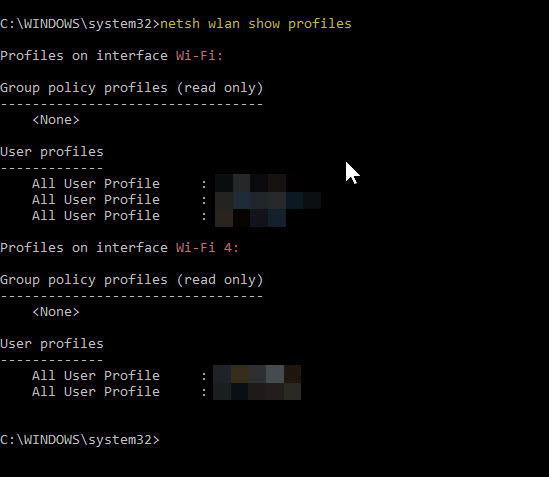
Viewing WLAN/Wi-Fi Network Passwords
Now that you know the profiles, and you cannot remember your network security key to connect some other device to a particular Wi-Fi access point, you can use the following command to view your network security keys, but you can only query one profile at a time (replace the “profile_name” with the actual profile name in your list):
netsh wlan show profile name="profile_name" key=clear
Example output (again obscured):
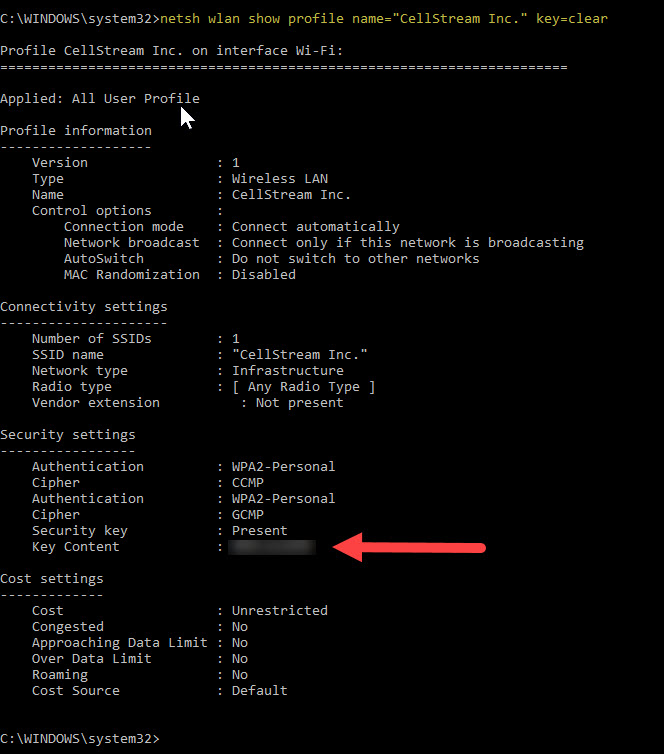
Now this raises some interesting issues. All the WLAN/Wi-Fi access keys are actually on your Windows 10 computer! Plus, as discussed in the article mentioned above, this leads to you inadvertently probing for these networks which could lead to a Man In The Middle attack.
Exporting Profiles
Did you know you can save all the profiles and passkeys?! Here is the command (replace “folder_path” with the path to where you want to save the file):
netsh wlan export profile key=clear folder="folder_path"
Example output (obscured):

Note: the folder must exist for this to work. The outputs are in XML format:
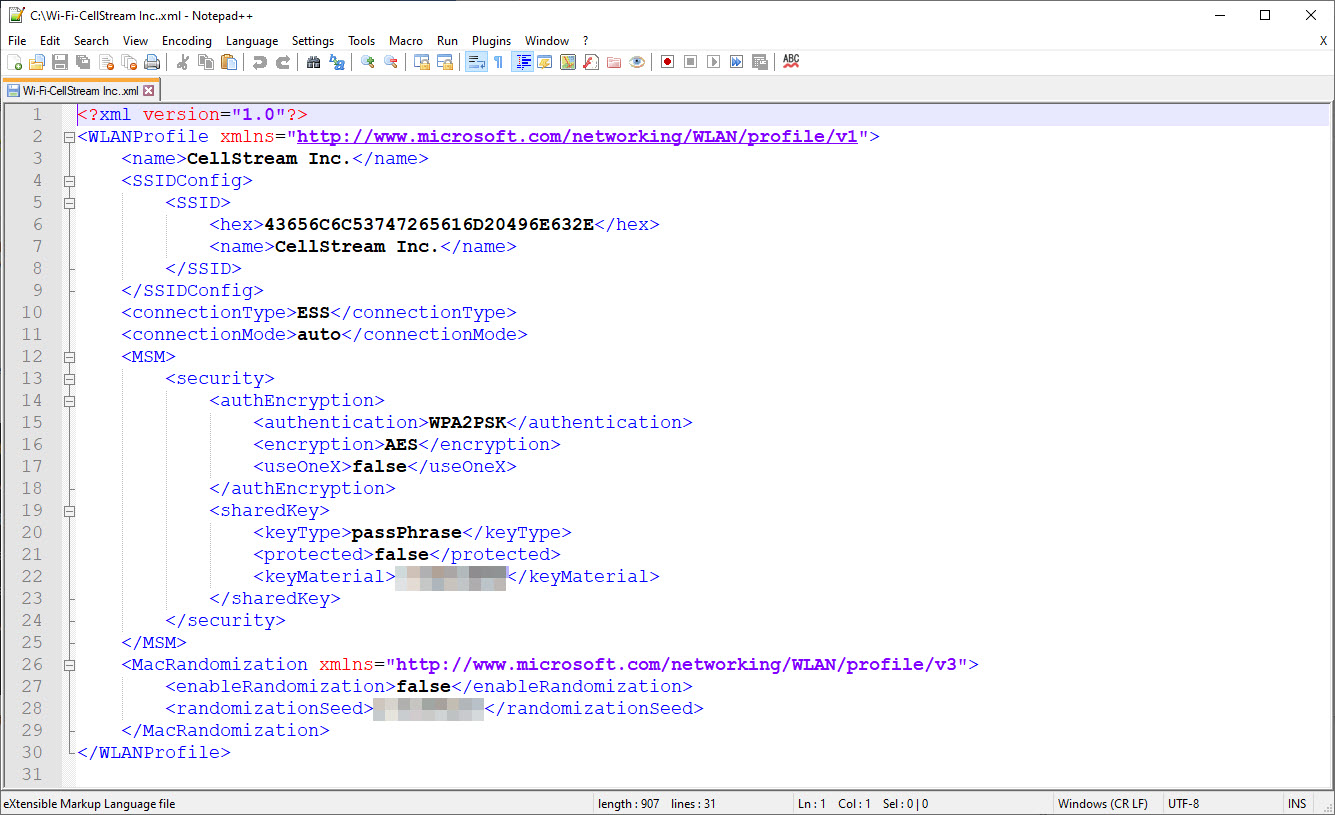
How to Stop Probing for Saved Networks
You can turn off the automatic connection setting which stops sending probes with the following command (replace the “profile_name” with the actual profile name in your list):
netsh wlan set profileparameter name="profile_name" connectionmode=manual
How to Remove Profiles
Another thing you want to do is remove profiles, which will also remove the network password.
Note: If you delete the current network you are connected to, your network connection will drop!
You do this with the following command to remove a particular profile (replace the “profile_name” with the actual profile name in your list):
netsh wlan delete profile name="profile_name"
Or you can remove them all:
netsh wlan delete profile *
We hope this helps Windows users. Feel Free to paruse our other WLAN/Wi-Fi and Windows articles using the tags below.
I hope you find this article and its content helpful. Comments are welcomed below. If you would like to see more articles like this, please support us by clicking the patron link where you will receive free bonus access to courses and more, or simply buying us a cup of coffee!, and all comments are welcome!

